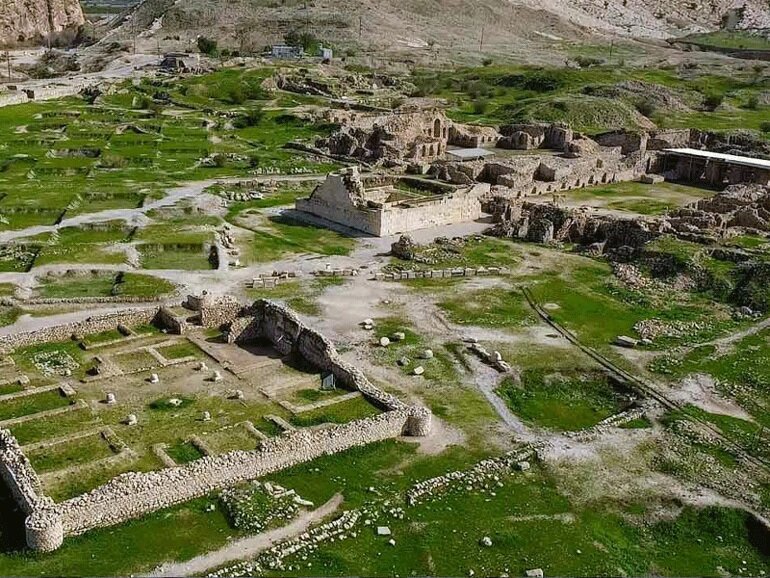Archaeological work sheds new light on Anahita Temple in western Iran

TEHRAN – The ancient Anahita Temple in western Iran has undergone an archaeological excavation after nearly two decades, according to Morteza Geravand, director of the National Base of Anahita Temple.
In an interview with ISNA, Geravand on Sunday explained that the latest round of excavations at the temple began in late August under the supervision of Dr. Mostafa Dehpahlavan, head of Iran’s Cultural Heritage Research Institute.
“The excavation was carried out in two main areas: a geophysical study and an archaeological dig, both yielding important findings,” Geravand said.
The geophysical study was conducted in the central section of the temple, between the first and second platforms, in a 10x10-meter area. “The results suggest that extensive industrial activities took place in this part of the site in the past,” Geravand stated. Although the precise timeline of these activities remains unclear, evidence points to a workshop that might have been used for baking bread or preparing food, possibly during the contemporary era.
One of the most significant discoveries during the study was a large quantity of furnace slag. Geravand said further investigation is needed in future excavation seasons to better understand this discovery, but initial findings suggest the site may have housed lime and plaster kilns. These kilns likely produced materials used in construction, and available evidence suggests they were operational from the Qajar era through to the second Pahlavi period.
“Further exploration is required to determine whether the [building] lime and plaster production dates back to earlier periods,” Geravand added, noting that the proximity of limestone quarries used for temple construction could suggest that stone materials brought to the site may have been processed in these kilns for use in building the temple.
Geravand also emphasized the long-standing use of these kilns during the construction of the temple. “It is possible that these kilns date back to the time the temple itself was built, and were utilized for completing the masonry work,” he said.
A geophysical study was also conducted in the southern part of the temple, where future infrastructure development is planned. “We wanted to ensure that no significant archaeological remains were located in this area, and fortunately, this was confirmed,” he said.
In the archaeological excavation itself, work was concentrated on the highest point of the temple’s grounds. “We opened five trenches, each 10x10 meters, and uncovered structures from the contemporary architectural period, the late Sassanian era, and the Islamic era,” Geravand said.
Furthermore, he explained that prior to 1968, some areas of the temple had been buried under a number of residential units. During this latest excavation, remnants of these homes were uncovered.
Geravand also noted earlier hypotheses that the upper part of the temple might contain the remains of a “Chahartaqi,” a traditional Iranian four-arched structure. “During this excavation, we found the continuation of a wall built on a rocky base, raising the possibility that it may have been part of a fire temple or a Chahartaqi, but further investigation is required.”
Stressing the importance of ongoing research, Geravand said, “Continued archaeological work is essential to restore order to the disorganized layout of the temple and understand the function and relationship of its platforms and other sections.”
The exact date of the temple’s construction and its original purpose remain unclear, and Geravand explained that one season of excavation is not enough to provide conclusive information. “We explored about 600 square meters of the temple, but given the temple’s vast size, this is only a fraction of the area that needs to be studied,” he said.
The official estimated that future excavations will need to cover between 1,500 and 2,000 square meters per phase, pending sufficient funding.
Anahita is the name of one of two archaeological sites in Iran popularly thought to have been attributed to the ancient deity Anahita. The larger and more widely known of the two is located at Kangavar in Kermanshah province. The other is located in the Bishapur region of the southern Fars province.
Anahita, also known as Anaitis, and Anahit, was an ancient Iranian goddess of royalty, water, and fertility; she is particularly associated with the last.
AM
Leave a Comment